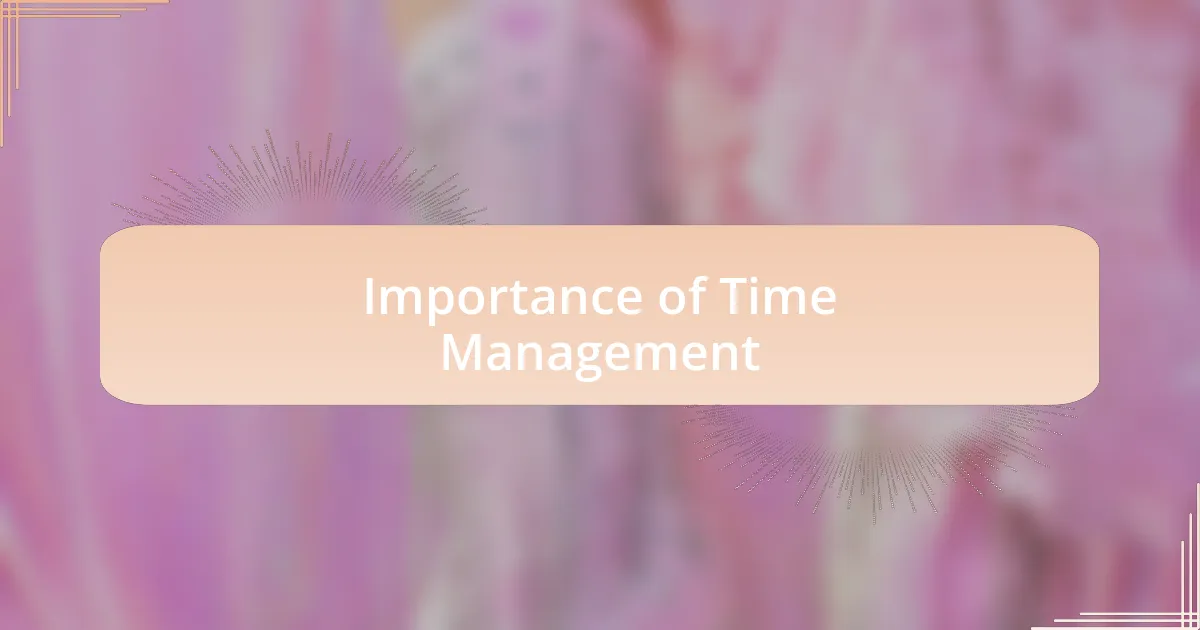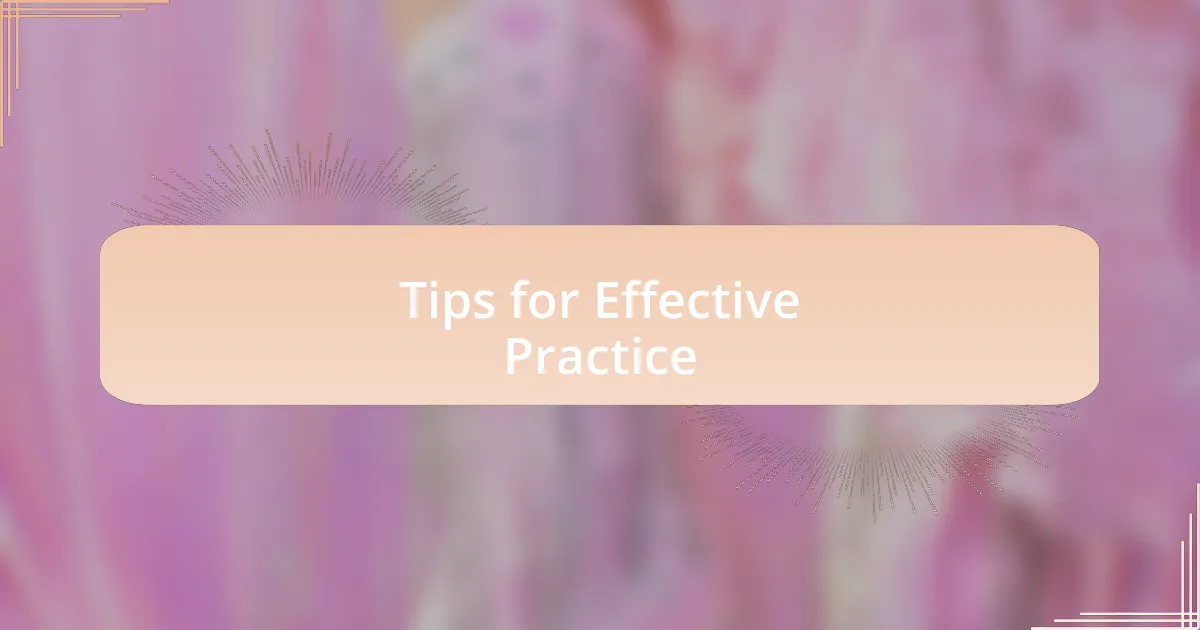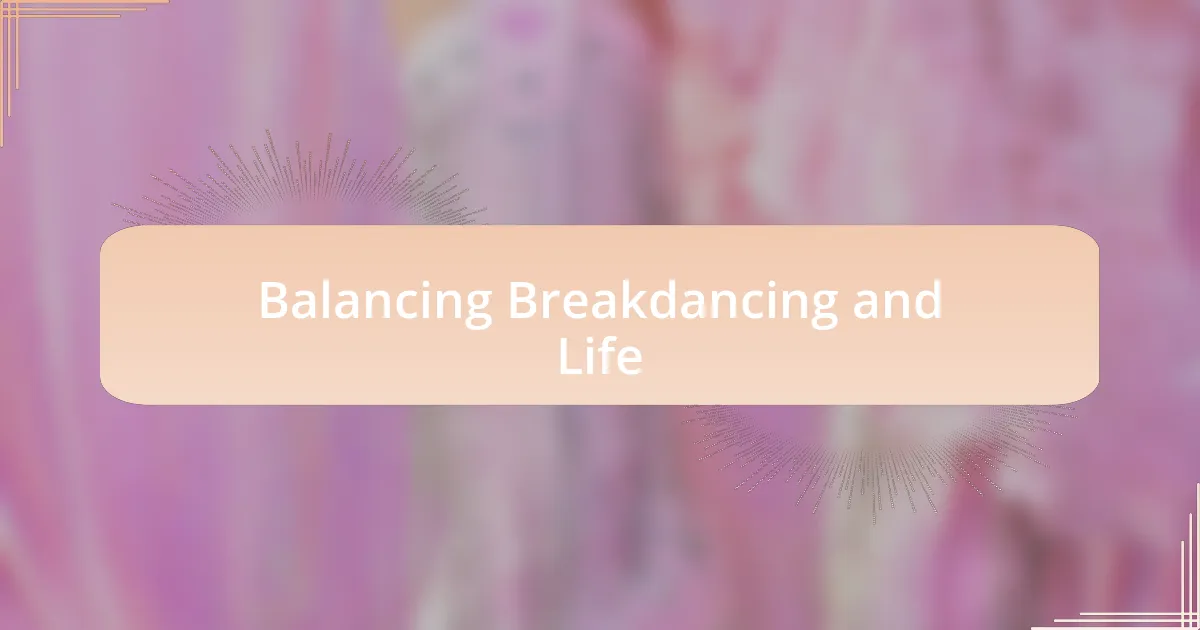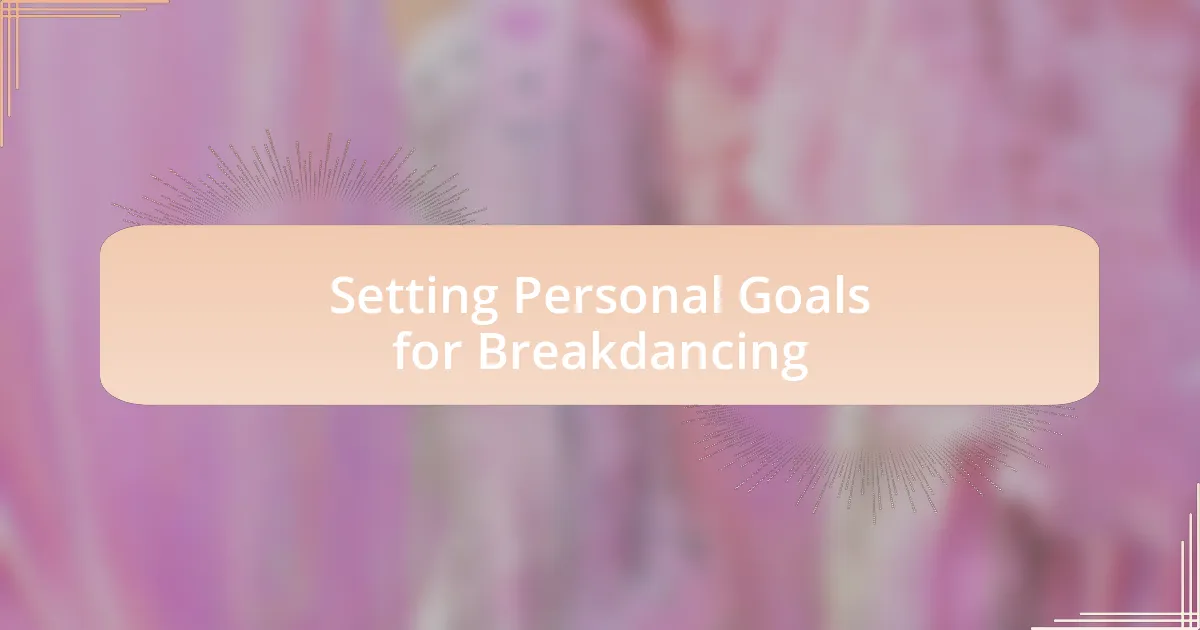Key takeaways:
- Effective time management requires understanding priorities, setting clear goals, and planning ahead to avoid feeling overwhelmed.
- Balancing breakdancing practice with personal life and social commitments is vital for maintaining energy and inspiration.
- Utilizing a routine, tracking progress, and incorporating varied techniques enhances skill development and prevents burnout.
- Setting specific, achievable goals and documenting progress fosters motivation and clarity in one’s breakdancing journey.

Understanding Time Management Basics
Time management, at its core, is about making choices that let us use our time effectively. I remember a time when I was juggling practice sessions, performances, and my day job. I often felt overwhelmed, questioning how I could possibly fit everything in. That’s when I realized that planning ahead was essential.
Understanding priorities is a major part of time management. I learned the hard way that not every task carries the same weight. Have you ever felt like you were busy but didn’t accomplish much? That’s where tracking my activities helped me pinpoint where I was wasting precious hours.
Lastly, setting clear goals transformed how I approached my dance journey. Initially, I stumbled along without direction, but once I defined what I wanted—like mastering specific moves or improving my stamina—I could allocate my time more strategically. Have you experienced that shift when you went from a vague idea to a solid plan? It’s incredible how focused intentions can lead to meaningful progress.

Importance of Time Management
Time management is crucial, especially in our vibrant breakdancing community. I recall the nights when I would push my limits in practice but still find myself lacking in skill come competition day. I learned that carving out dedicated blocks of time not only improved my technique but also gave me the confidence to perform. Have you ever noticed how a well-structured schedule can alleviate stress and foster creativity?
Maintaining a balanced life is another essential aspect of effective time management. I once found myself neglecting social events because I was so consumed with dance. It hit me hard when my friends pointed it out, leading to a realization: cultivating relationships is just as important as honing my craft. When I balanced my commitments, I felt more energized and inspired when it was time to dance.
Moreover, mastering time management opens up opportunities for growth. I remember a moment of transformation when I started setting aside time not just for practice, but for learning about dance history and techniques through videos. This not only enriched my understanding but also enhanced my style. Have you ever explored something outside your usual practice that pushed your boundaries? Finding that balance can truly unlock your potential.

Time Management in Breakdancing
Time management in breakdancing can often be a game-changer. I remember one particular session where I scheduled time specifically for refining my freezes. It was exhilarating to see such focused practice pay off during a performance later on. How often do you set aside dedicated time for specific moves? It really can make all the difference.
Creating a routine not only brings discipline but can also prevent burnout. There was a week when I pushed myself every single day without rest, thinking I was maximizing my progress. Instead, I ended up exhausted and frustrated. This taught me the vital importance of downtime. Isn’t it interesting how rest can be just as powerful as practice?
Additionally, setting goals within a limited timeframe helped me visualize my progress in breakdancing. I recall choosing a specific battle to focus my training around. I mapped out every week leading up to it, giving me direction and purpose in the studio. Have you ever tried breaking down your objectives into smaller steps? This approach can transform your practice sessions from overwhelming to achievable.

Tips for Effective Practice
When I first started practicing, I underestimated the power of warm-ups. I remember jumping straight into my moves, eager to impress, only to feel stiff and uncoordinated. Now, I always dedicate the first 15 minutes to a proper warm-up; it not only enhances my performance but also reduces the risk of injury. Have you found that warming up makes a difference for you?
Tracking my practice sessions has genuinely changed the way I see my progress. I learned this the hard way during a routine practice where I felt like I was stagnant. That’s when I decided to jot down what I worked on each day, and the small improvements over time became incredibly motivating. It’s like having a tangible representation of your skills evolving. Have you ever considered how documenting your practice might bring a new perspective to your journey?
Incorporating a variety of styles into my sessions has become a vital habit for me. I used to focus solely on my preferred moves, which left my practice feeling repetitive and uninspired. By challenging myself to experiment with different techniques, I discovered new strengths and kept my passion alive. How often do you step outside your comfort zone in your training? Embracing diversity in practice can spark creativity and keep your energy levels high.

Balancing Breakdancing and Life
Striking a balance between breakdancing and everyday life can often feel like a juggling act. I vividly remember a time when I overcommitted to dance competitions, which led to sleepless nights and missed deadlines in my studies. It was a wake-up call that taught me the importance of setting priorities and making time for my responsibilities outside of dancing. Have you ever found yourself caught in the whirlwind of practicing and forgetting about other crucial aspects of your life?
Creating a schedule that honors both my breakdancing passion and other commitments has been transformative. I started using a planner to block out times for training sessions alongside work and personal tasks. This simple change brought clarity and lessened the stress of wondering if I had time for everything. Isn’t it rewarding to see how structure can lead to more freedom in your creative pursuits?
I’ve also realized that taking breaks from breakdancing allows me to return with fresh energy and new ideas. There was a period when I felt burnt out after endless practice, and stepping back for a few days made all the difference. It reminded me that downtime is not wasted time; rather, it fuels my dancing spirit. Do you remember a moment when stepping away helped reignite your passion?

Setting Personal Goals for Breakdancing
Setting personal goals for breakdancing is crucial for growth and improvement. I recall when I first set a goal to master a challenging move that had eluded me for months. I broke it down into smaller milestones, like perfecting my footwork first, and with each mini-victory, my confidence surged. Have you tried breaking your larger goals into bite-sized pieces?
Another powerful lesson came when I decided to document my progress. I would film my practice sessions and watch them back to see how far I’d come. This not only motivated me but also helped pinpoint areas that required more focus. Isn’t it fascinating how visual proof of improvement can boost our determination?
Setting specific timelines has also given my practice sessions more direction. For instance, I once aimed to learn a new routine within two weeks, and committing to that timeline encouraged me to push my limits. I often found myself asking: what goals can I set this week that will elevate my skills tomorrow? It’s all about creating that roadmap tailored to your unique journey in breakdancing.